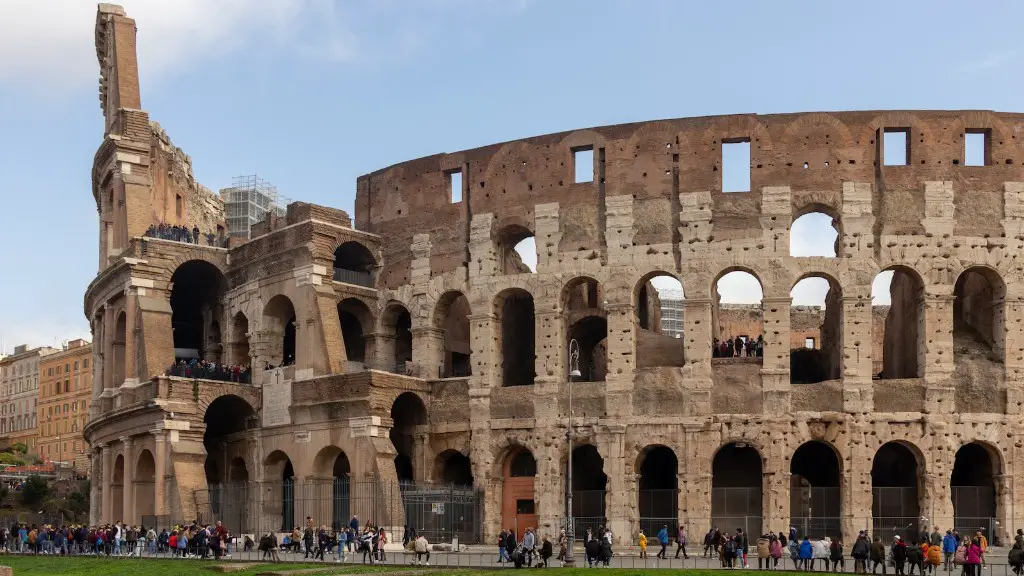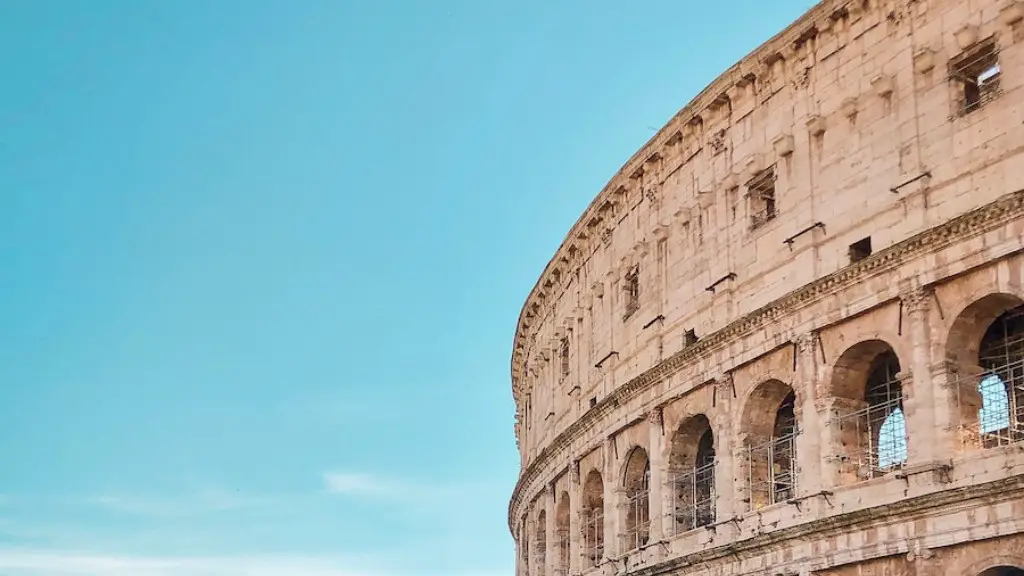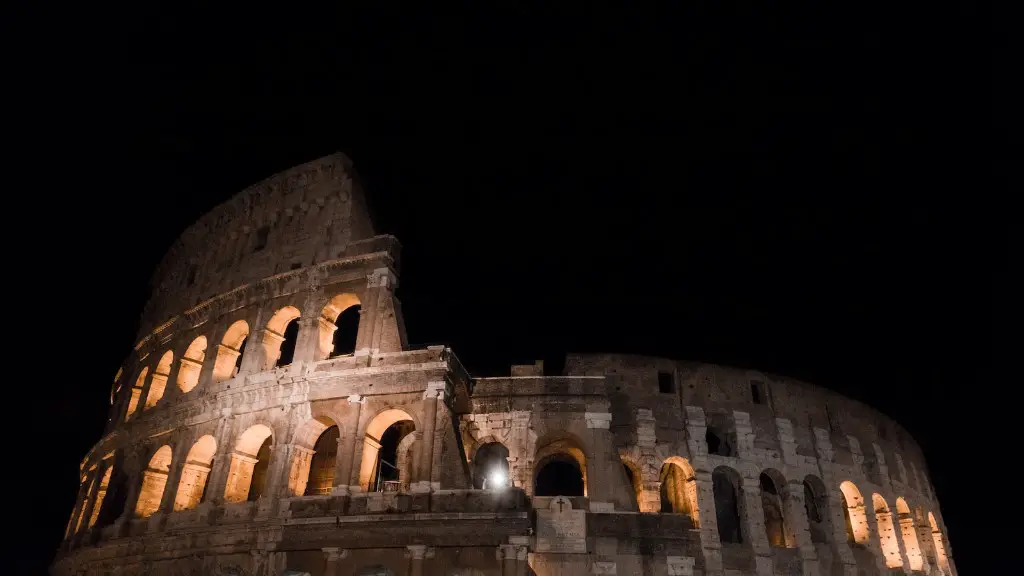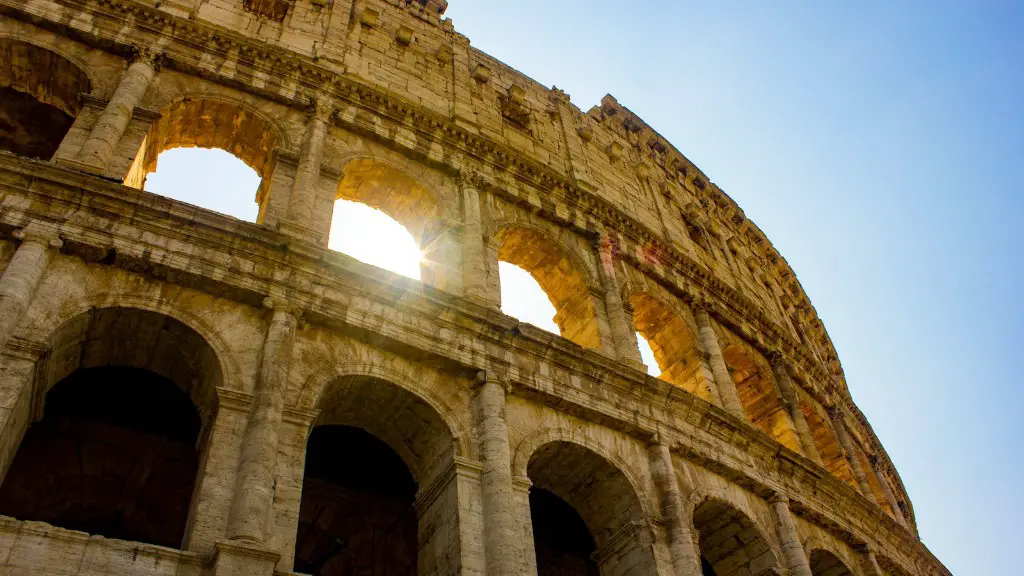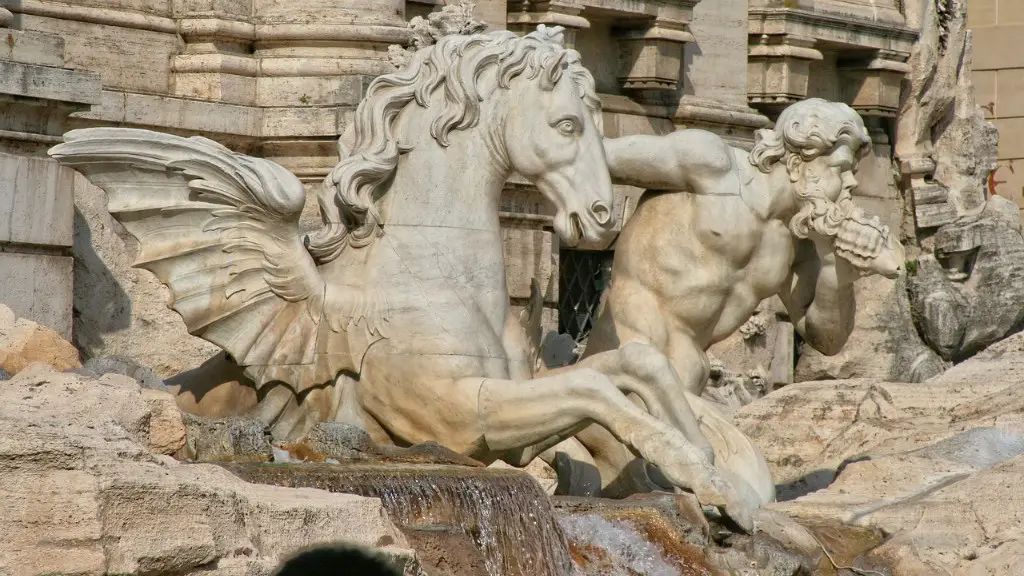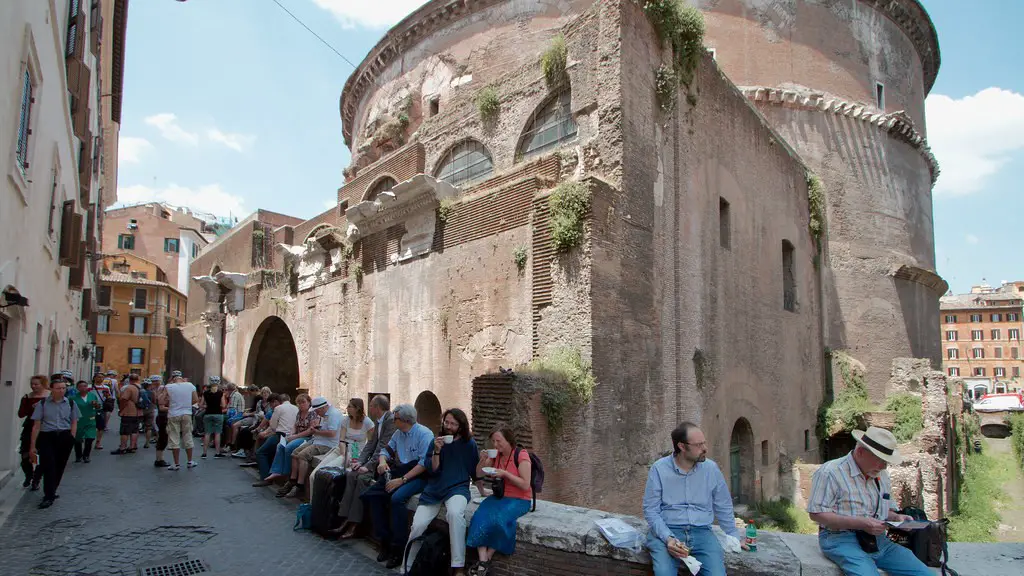Ancient Rome had a rich and varied architectural tradition. Unlike the Greeks, who tended to build monolithic temples, the Romans favored a more flexible approach, constructing a variety of public and private buildings. From monumental temples and baths to humble dwellings and shops, Roman architecture was characterized by its diversity and adaptability.
The main similarities between Ancient Greek and Roman architecture are the use of columns and arches. Roman architecture is said to have been heavily influenced by the Etruscans, while Ancient Greek architecture is more closely associated with the Minoans. Both styles used marble and limestone, as well as employing intricate designs. However, there are also several key differences between the two. For instance, Roman architecture tended to be more ornate, while Ancient Greek architecture was more refined. Additionally, Roman buildings were often constructed on a grand scale, while Ancient Greek structures were more modest in size.
How did Roman architecture differ from Greek architecture?
The main difference between Greek and Roman temples is that Greek temples were built freestanding, while Roman temples were built as part of a larger building project. This meant that the final design of Roman temples took into account the other buildings around them, while Greek temples did not.
Roman architecture was heavily influenced by Greek architecture, but it also developed its own unique style. The two styles are often considered one body of classical architecture. Roman architecture is characterized by its use of arches, vaults, and domes. It also often features ornate decorations and grandiose buildings.
How is Roman architecture similar to Greek architecture
The marble and limestone used by the Greeks and Romans were both durable and relatively easy to come by, making them popular choices for building materials. However, the Romans perfected the use of concrete in buildings, which allowed them to create more free-flowing structures. This made their buildings more resistant to earthquake damage and allowed for greater creativity in design.
The Roman’s took inspiration from the Greeks when it came to architecture and improved upon it by using new materials and technology. The most notable difference is the use of concrete, which the Romans were able to perfect. This allowed for them to create structures that were much more durable and complex than the Greeks were able to.
Did Greek architecture influence Roman architecture?
Republican Roman architecture was heavily influenced by the Etruscans. The Etruscans were an ancient people who lived in central Italy and were the early kings of Rome. They were greatly influenced by Greek architecture, and this is evident in the Republican period.
The arch is a simple but incredibly strong and versatile structural element that the Romans mastered and used extensively in their construction projects. Arches can span large distances and support a lot of weight, making them ideal for bridges, aqueducts and other large scale structures. The Roman arch was crucial to the expansion of Roman infrastructure across the empire and helped to connect far-flung regions.
Is Roman art influenced by Greek?
Roman art was greatly influenced by the Greeks, as well as the Egyptians and Etruscans. The most noticeable influence of Greek art can be seen in the Roman style.
There is a clear difference between the styles of Ancient Greek and Roman artists. Greek artists tended to focus on individualism and idealism, while Roman artists were more concerned with realism and highlighting the spirits of their rulers. This difference is likely due to the different socio-political contexts of each civilization. Greek society was much more focused on the individual, while Roman society was more concerned with the collective good. This difference is reflected in the art of each civilization.
Is Roman mythology inspired by Greek
The Greek gods and goddesses had a significant influence on the development of Roman deities and mythology. Rome was geographically situated such that its citizens experienced frequent contact with the Greeks, who had expanded their territories into the Italian peninsula and Sicily. The Romans adopted many of the Greek gods and goddesses into their own pantheon, often with similar characteristics and roles. This syncretism between the Roman and Greek religions led to a rich and complex mythology that still informs our understanding of both cultures today.
Though both ancient Greece and Rome were considered great empires with many similarities, their artists had different focuses. While Ancient Greek artists tended to focus on individualism and idealism, Ancient Roman artists were more likely to focus on realism and highlighting the spirits of their rulers. This difference is likely due to the different cultures and values of these two countries.
What are the similarities between Greek and Roman?
It is interesting to note the similarities between the Roman and Greek Empires. Both were city-states, had a form of democracy, and had very similar gods. Both also affected the Mediterranean area greatly. These similarities are likely due to the fact that the Roman Empire was heavily influenced by the Greek Empire.
To meet the demand for Greek-style art from wealthy and educated Romans, Greek and Roman artists created marble and bronze copies of famous Greek statues. These copies were often of very high quality, and allowed more people to enjoy and appreciate the Greek art style.
In what ways did Rome copy Greek culture
One of the most obvious aspects of the Greek culture that the Romans appropriated was their religion, adopting and renaming many of the Hellenic gods and keeping the many myths surrounding them. Many of the Roman gods are direct counterparts to their Greek counterparts, such as Jupiter and Zeus, Juno and Hera, etc. Additionally, the Romans kept many of the same festivals and holidays as the Greeks, such as the Roman Bacchanalia which was based off of the Greek Dionysia.
Along with this, the Romans adopted Greek architectural and artistic styling. Many of the most famous and well-preserved Roman buildings, such as the Pantheon and the Colosseum, are built in the Greek style. Additionally, Roman art is often heavily influenced by Hellenistic art, with many Roman sculptures, for example, being direct copies of Greek originals.
The ancient Romans were well known for their skill in copying and replicating works of art, especially those from the ancient Greeks. While the Greeks typically used bronze to create their sculptures, the Romans often used marble to create their own copies. This was likely due to the abundance of marble in Rome and the lack of bronze. Regardless, the Romans were able to create some stunning replicas that were almost indistinguishable from the originals.
Which most influenced the architecture of Rome?
Roman religious architecture was heavily influenced by both the Greeks and the Etruscans. The Romans took elements from both Greek and Etruscan architecture and developed their own style. The most obvious influences from the Greeks can be seen in the Roman temples. The temples were typically built on a raised platform with a series of steps leading up to the entrance. The front of the temple was often decorated with a portico, or a colonnade of columns. The interior of the temple was usually divided into two main chambers, the cella and the pronaos. The cella was the innermost chamber of the temple and contained the statue of the deity that the temple was dedicated to. The pronaos was the outer chamber of the temple and served as a place for ritual ceremonies. The Etruscans were a civilization in the Italian peninsula that preceded the Roman civilization. The Etruscans were known for their elaborate tombs and courtly architecture. The Romans borrowed heavily from Etruscan architecture, particularly in the design of their temples. Roman temples were typically modeled after Etruscan temples, with a few important distinctions. Roman temples were typically built on a raised platform, while Etruscan temples were built at ground level. Roman temples
The Roman artists inherited the realistic proportions, sense of movement, and overall beauty of Greek sculptures. They often copied Greek sculptures before creating their own. The Romans, like the Greeks, carved both free-standing statues and reliefs that were commonly used to decorate temples.
Why didn’t the Greeks use arches
The arch was an important invention for the Greeks, as it allowed them to construct sturdy and stable buildings. However, they found the shape of the arch to be unappealing, and so it was used mainly in sewers and other utilitarian applications.
Arches have been used in architecture for thousands of years and continue to be a popular choice for both structural and decorative purposes. They are a versatile design element that can be used in a variety of ways, from simple doorways to grandiose bridges. Arches can be made from a variety of materials, including stone, brick, metal, and even wood.
Final Words
There are significant similarities between Ancient Greek and Roman architecture, mainly due to the fact that the Romans adopted much of the Greek architectural style. Both cultures heavily relied on columns and temples in their architecture, and both used marble extensively. However, there are also some key differences between the two styles. Roman architecture was more focused on engineering and practicality, while Greek architecture was more concerned with aesthetics and proportion. Additionally, Roman architecture tended to be more ornate and decorative, while Greek architecture strived for simplicity.
The two cultures shared similar styles in their buildings and temples. upright columns, lintel beams, and pediments were all features of both Greek and Roman architecture. The Romans were also influenced by the Etruscans, who had their own unique style. Roman architecture is sometimes described as a mix of all three cultures.
